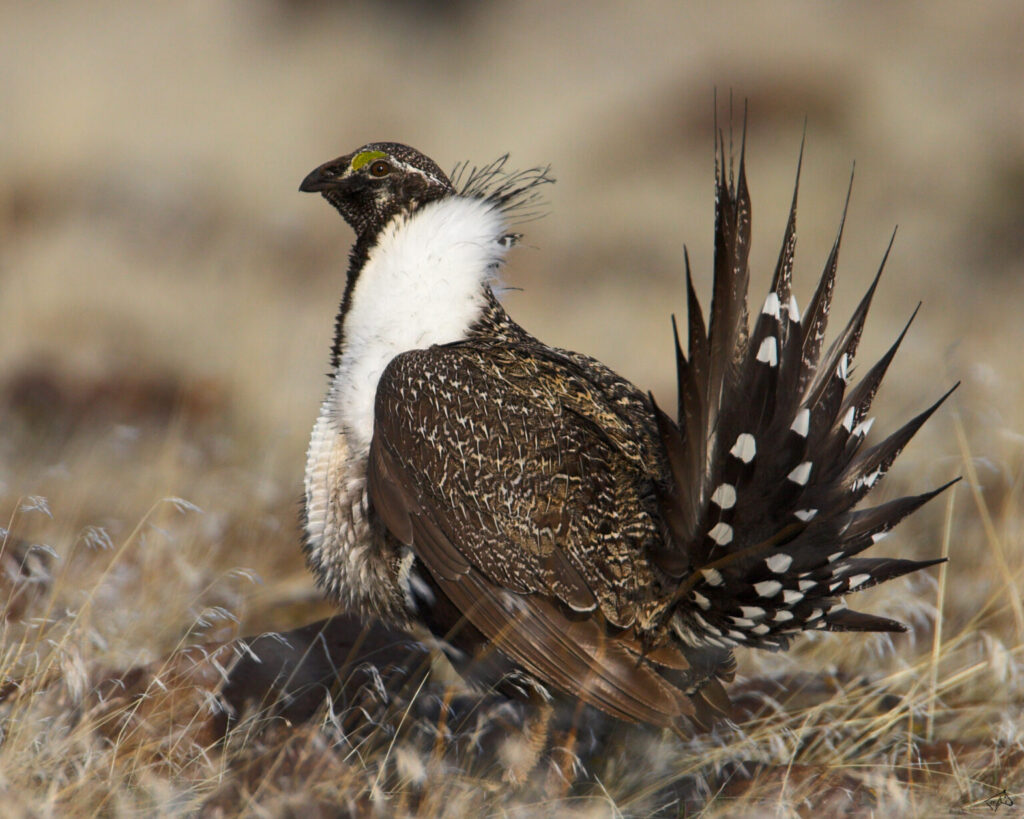Heavy metal music, spotlights, and an ATV

By Dr. Sunshine Brosi
At 3 a.m. USU Eastern students are on ATVs riding around the desert in Carbon County. They have
spotlights and nets and they blast heavy metal music from a speaker.
And this counts for class credit.
The music hides the sound of their footsteps and the spotlights are used to look for the allusive greater
sage-grouse, a chicken-like wild bird native to the American west.
Do you think your 9 a.m. class starts early? Imagine meeting at 3. Students in Dr. Sunshine Brosi’s avian
ecology lab are doing just that while gaining practical experience catching, collaring, and counting sage-
grouse during their spring mating displays.
In Utah, the population of greater sage-grouse has decline 60% or more due to a variety of reasons
including habitat fragmentation and human development. Dr. Brosi and her students are working with
the Utah Department of Wildlife Resources (DWR) to determine the movements of individual animals,
and with the USDA Forest Service to monitor populations.
Students gain experience in standardized monitoring methods and they get to meet and work with
future employers whose offices are based in Price. Greater sage-grouse are one of two species of sage-
grouse found in Utah. The other species is the Gunnison sage-grouse found only in the far southeastern
corner of the state.
Both species are known for their unique mating rituals, which include an elaborate courtship display. In
the spring, the large male birds make a strange burbling popping sound by gulping and holding a gallon
of air in a pouch of their esophagus.
The load-booming display is accompanied by a puffed chest that displays yellow air sacs and a fan of
starburst pointed tail feathers. These distinctive birds display and dance around to attract females.
In the wild the birds can live up to nine years and can return to the same area, called a lek, for several
springs year after year. Sage-grouse are one of many unique Utah animals that students in the Wildlife
Ecology and Management Program can gain first-hand experience in monitoring.
If early morning heavy metal music and spotlighting animals seems like an amazing fieldtrip contact Dr.
Sunshine Brosi, [email protected].




